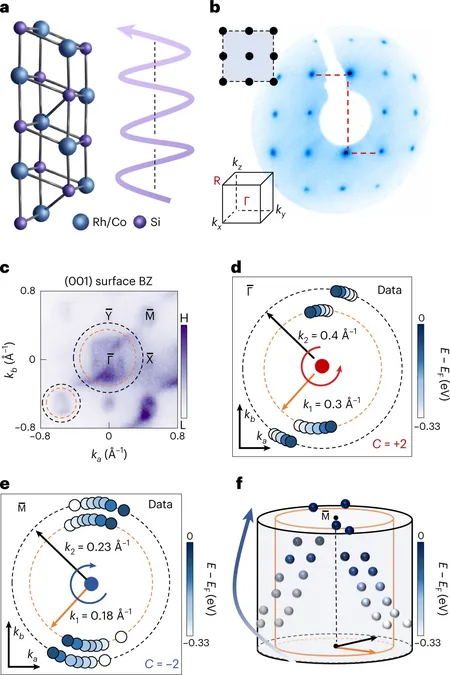
Breakthrough in Quantum Materials: The Power of van Hove Singularities Unleashed!
2024-11-22
Author: Ming
Introduction
Researchers have made an exhilarating discovery regarding van Hove singularities—specific energy levels where strong interactions between electrons can lead to extraordinary quantum properties in materials. This could herald a new era of high-temperature superconductivity and groundbreaking technologies that promise to reshape our world.
What are Van Hove Singularities?
Van Hove singularities are critical for understanding the behavior of electrons in quantum materials, particularly in topological materials. These unique substances allow electrons to flow exclusively along their surfaces, potentially leading to a suite of applications in next-generation electronics and energy systems. However, the quantum characteristics of these materials have remained largely untapped, making this research extremely significant.
The Groundbreaking Study
A groundbreaking study led by Assistant Professor Chang Guoqing from Nanyang Technological University's School of Physical and Mathematical Sciences has identified two distinct types of van Hove singularities present in the topological materials rhodium monosilicide (RhSi) and cobalt monosilicide (CoSi). The research findings were published in the prestigious journal *Nature Physics* under the title "Tunable Topologically Driven Fermi Arc van Hove Singularities."
Findings and Implications
The researchers discovered that these van Hove singularities exist near the Fermi level—critical for electron behaviors at absolute zero temperature. This positioning suggests that such materials are likely to exhibit highly coveted properties like superconductivity and ferromagnetism, which are essential for numerous technological advancements.
Engineering Quantum Materials
In an exciting twist, the team found that by integrating metal atoms into these materials, they could adjust the energy levels of the van Hove singularities. This capability opens new avenues for engineering quantum materials with tailored properties, creating opportunities for tailored applications in various fields.
Conclusion
Asst Prof Chang emphasized the implications of this research, stating, "Our findings pave the way for the discovery of more quantum materials with unique characteristics, which could drive innovations across diverse industries, from computational technologies to advanced energy solutions."
As the quest for sustainable and efficient energy sources progresses, this research could not only lead to better electronic devices but also to a new generation of energy solutions that combat global challenges. The future is bright for quantum materials—and this discovery could be just the tip of the iceberg! Stay tuned as we uncover more about the wonders of the quantum world!





 Brasil (PT)
Brasil (PT)
 Canada (EN)
Canada (EN)
 Chile (ES)
Chile (ES)
 España (ES)
España (ES)
 France (FR)
France (FR)
 Hong Kong (EN)
Hong Kong (EN)
 Italia (IT)
Italia (IT)
 日本 (JA)
日本 (JA)
 Magyarország (HU)
Magyarország (HU)
 Norge (NO)
Norge (NO)
 Polska (PL)
Polska (PL)
 Schweiz (DE)
Schweiz (DE)
 Singapore (EN)
Singapore (EN)
 Sverige (SV)
Sverige (SV)
 Suomi (FI)
Suomi (FI)
 Türkiye (TR)
Türkiye (TR)